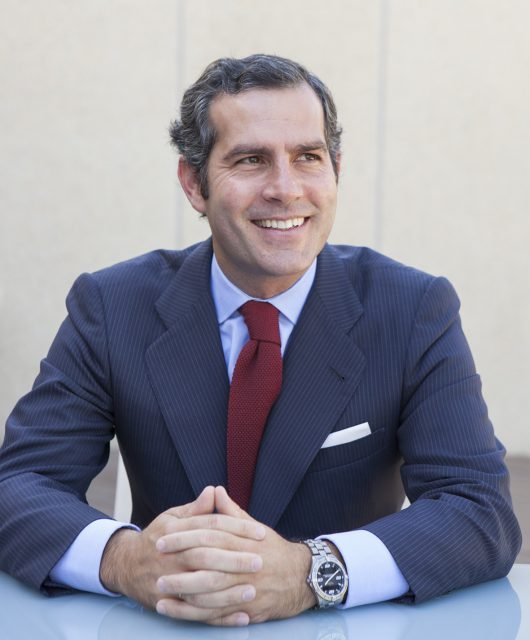The Turning Point Of The Financial Sector, By Interbrand’s Beatriz Diego
The financial sector is becoming more vulnerable to the looming threat of disruption with the arrival of new players completely changing the arena.

The next big news in this industry will inevitably involve a drastic reorganization in which the best-established banks and newcomers will win customers, while weaker incumbents and undifferentiated challengers will struggle.
The competitive space is shifting: tech giants like Facebook, Apple, Google and Amazon are making moves around the industry and brands like Monzo are breaking into the market forcing traditional banks to embrace new business models to survive.
Customers are more demanding and informed than ever, and their loyalty shouldn’t be taken for granted as options bloom from everywhere. Brands need to offer new products and services, creating a holistic experience able to make people’s lives easier.
In 2021, the second leader in mobile payments in the United States was not a bank nor a financial institution, but a coffee shop: Starbucks.
Now, it is not enough to meet the new trends and desires, brands have to get ahead of the curve by anticipating what is coming next.
From products to ecosystems
From now on, different players will break the boundaries of financial services, creating new arenas and new frames of competition.
A well-defined Brand Trajectory helps us to create a universe of feelings and emotions going beyond our own industry, offering much more than financial services.
Mastercard understood the need to reshape its business to survive. During the past years, it has shifted from a credit card company to a technology company by setting a new brand ambition and keeping it at the center of its decisions. As a result, it increased brand value repeatedly: by 25% in 2019, and by 18% in 2021 (Interbrand Best Global Brands).
Amazon initially was an online marketplace for books and today, it has a powerful presence in different product categories, including the financial services, following the idea of being the Earth’s most customer-centric company. Around that concept and what it implies, Amazon is able to expand its offering drastically.
From self-awareness to environmental awareness:
We are at an inflection point in sustainable lending because central banks and regulators are recognizing the macroeconomic consequences of climate change.
The Sustainable Development Goals (SDG) developed by the UN have a clear relevance and the financial world is more conscious than ever of the importance of promoting them. Here we have some examples of Top 10 Trends for 2021 from The Accenture Banking Report and Bank of America Newsroom:
k of America Newsroom:
- NatWest has committed to halve the climate impact of its lending by 2030.
- Deutsche Bank has promised to link executive compensation to sustainability.
- European Investment Bank promised to stop all fossil fuel funding.
- Bank of America increases environmental business target by 2030: from $ 300 billion in 2019 to $ 1 Trillion in 2021.
An aspirational yet credible Brand Purpose has a critical role in showing a genuine change avoiding green-washing communication campaigns that have no substance.
According to the Power of Purpose, an authentic and well-communicated purpose can contribute up to 17% of a company’s financial performance.
The EY Business case for purpose states that the 84% of executives who believe in a shared purpose will be more successful in transformation efforts.
From competition to collaboration:
As Accenture states in its report “Driving the future of payments. 10 mega trends”: The power of networks is built on cooperation. Fintechs and banks will drive the future of industry transformation, becoming partners instead of rivals. While banks have brand recognition, industry knowledge, and a customer base to scale, fintechs have disruptive technologies, flexibility, and agility.
Financial services for individuals represent the majority of collaborations between fintech and banks, although there are other offerings that are also beneficial. HSBC partnered with Tradeshift “to offer an integrated proposition that will allow buyers to automate and digitise paper-heavy supply chain processes from all their suppliers and organise supply chain financing all in one place.” (www.tradeshift.com).
Well-known banks are working together to launch innovative proposals able to attract the younger generations through a vivid customer experience and an avant-garde brand image.
Zelle, “a fast way to send and receive money with the people you know and trust”, is the consequence of a joint effort of Bank of America, BB&T, Capital One, JP Morgan Chase & Co, PNC, Wells Fargo, US Bank.
The industry in Spain, which has one of the most competitive personal banking markets in Europe decided to create Bizum, with the support of the Bank of Spain, to provide instant mobile payments. People can use their smartphones to send small amounts faster than a bank transfer, both between friends and companies.
In conclusion, brands within the financial sector must ensure their credibility, differentiation, and relevance to sustain their competitiveness. To do so, it is key that they seize the opportunity and momentum defining a Brand Strategy that allows them to survive in a constantly evolving and increasingly demanding industry.





